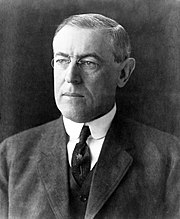Woodrow Wilson's Human Design Chart
5/1 Sacral Generator**Woodrow Wilson: A Human Design Perspective**
Woodrow Wilson, born on December 29, 1856, in Staunton, Virginia, was an influential American politician who served as the 28th President of the United States from 1913 to 1921. As a Generator in Human Design, Wilson’s energy was characterized by his ability to respond to the demands of his environment, which played a crucial role in his political career and leadership style.
Wilson’s Inner Authority was Sacral, guiding him to make decisions based on his gut responses. This innate ability to respond to opportunities helped him navigate the complexities of political life, from his early days as a scholar to his presidency during a tumultuous era. His Profile, 5/1, reflects a blend of a problem-solver and a foundational thinker, allowing him to address societal challenges with innovative solutions while also seeking a solid base of knowledge.
Educated at Princeton and Johns Hopkins, Wilson earned his Ph.D. with his seminal work “Congressional Government” in 1885. His academic background laid the groundwork for his later reforms in higher education as president of Princeton University, where he implemented significant changes that influenced American university education.
Entering politics as a Democrat, Wilson was elected governor of New Jersey in 1911, where his liberal reforms garnered national attention and led to his presidential nomination in 1912. His campaign capitalized on a split Republican party, and he won by a landslide, advocating for a reformist agenda known as the “New Freedom.” His initiatives included lowering tariffs, establishing a graduated income tax, and creating landmark laws against child labor, showcasing his ability to respond to the pressing needs of the nation.
On the international stage, Wilson’s presidency was marked by both ambition and challenges. He initially pledged to keep America out of World War I but ultimately declared war on Germany in 1917. His vision for peace, encapsulated in the “Fourteen Points,” aimed to reshape the post-war world. However, his rigid adherence to his ideals at the Versailles Peace Conference led to significant compromises that ultimately thwarted his dream of a League of Nations.
Wilson’s Incarnation Cross, the Left Angle Cross of Demands (58/52 | 48/21), reflects his life’s challenges and the pressing demands he faced as a leader. His channels, including 43-23 and 25-51, highlight his capacity for innovative thinking and emotional depth, although his struggle with rigidity and unresolved issues often hindered his effectiveness.
In his later years, Wilson’s health declined, and he relied heavily on his second wife, Edith Galt Wilson, to manage his presidency during his incapacitation. He retired in 1921, leaving a complex legacy marked by both significant achievements and notable failures. Wilson passed away on February 3, 1924, in Washington, D.C., at the age of 67, leaving behind a profound impact on American politics and global diplomacy.
Woodrow Wilson remains a figure of both intellectual brilliance and personal complexity, embodying the traits of a Generator who sought to respond to the demands of his time while grappling with the limitations of his vision and health.
Discover More Famous People
Browse and analyze over 55,000 public figures and celebrities.
Ra Uru Hu
5/1 Manifestor
Martha Stewart
4/6 Manifestor
David Lynch
4/6 Generator
Barack Obama
6/2 Projector
Steve Jobs
6/3 Generator
Vladimir Putin
5/1 Manifestor
Kim Kardashian
3/5 Generator
Michael Jackson
1/3 Projector
Marilyn Monroe
6/2 Projector
Ariana Grande
2/4 Projector
Oprah Winfrey
2/4 Generator
Johnny Depp
2/4 ManifestorWhat is HumanDesign.ai and how does it work?
Curious what makes Woodrow Wilson tick? HumanDesign.ai instantly maps their exact birth data into a fully interactive clickable bodygraph chart, letting you hover or tap every center, channel, and gate for plain-language explanations. Bella, the platform’s built-in AI guide, adds context in real time, translating complex mechanics into everyday insights so you can see how Woodrow Wilson’s strengths, challenges, and life themes play out on-screen.
The same tools are waiting for you. Generate your own Human Design Chart in seconds, open a library of 2000+ suggested questions, and chat with Bella as often as you like to decode your design, daily transits, and even relationship dynamics.
Want to compare energies? Save unlimited charts for friends, family, or clients, then ask Bella to reveal compatibilities, composite patterns, or coaching tips, all in one conversation thread.
Start free with core features, or unlock our Personal and Pro plans for deeper dives: unlimited Q&A, celebrity chart search spanning 55,000+ public figures, white-label PDF reports, branded content generation, and a professional profile with built-in booking for practitioners. Whether you’re exploring your own potential or guiding others, HumanDesign.ai delivers an ever-expanding toolbox of AI-powered insights—no spreadsheets, no jargon, just clarity at your fingertips.
Ready to see yours? Signup for FREE today!

